Pizza, pesto y pasta, ¿qué tienen todos en común? ¡Albahaca!
La albahaca es una hierba culinaria popular que se encuentra en la cocina italiana, mediterránea, vietnamita, indonesia y más. Esta hoja verde llena de sabor realza y eleva los aromas de muchos platos sabrosos e incluso bebidas. ¿Es incluso una ensalada Caprese sin albahaca? ¿Vale la pena las calorías de una bebida de batido de albahaca si no contiene albahaca? ¡No!
La albahaca es una hierba tan fácil de cultivar que no hay razón para que no la pruebes. Ya seas un jardinero novato, aficionado o experto, la albahaca fresca está a tu alcance. ¡Incluso es feliz de florecer en la comodidad de su hogar!
¿Quieres empezar tu propio jardín en el interior? ¡Aquí encontrarás todo lo esencial que debes saber sobre el cultivo y el cuidado de la albahaca en interiores!
Materiales necesarios
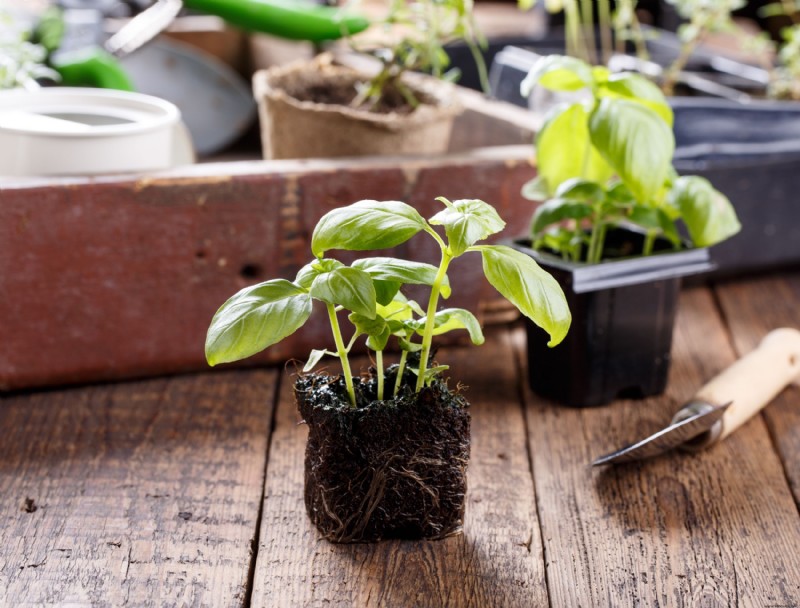
Cultivar una planta de albahaca en interiores es simple. Con algunos materiales útiles, el proceso es mucho más fácil. Aquí hay algunas cosas que te ayudarán a cultivar tu propia planta de albahaca:
- Semillas de albahaca o planta de albahaca
- Maceta de jardín con buen drenaje
- Tierra para macetas
- Regadera
- Tijeras de podar o tijeras afiladas
- Luz de cultivo LED para interiores (opcional)
Elige tu maceta
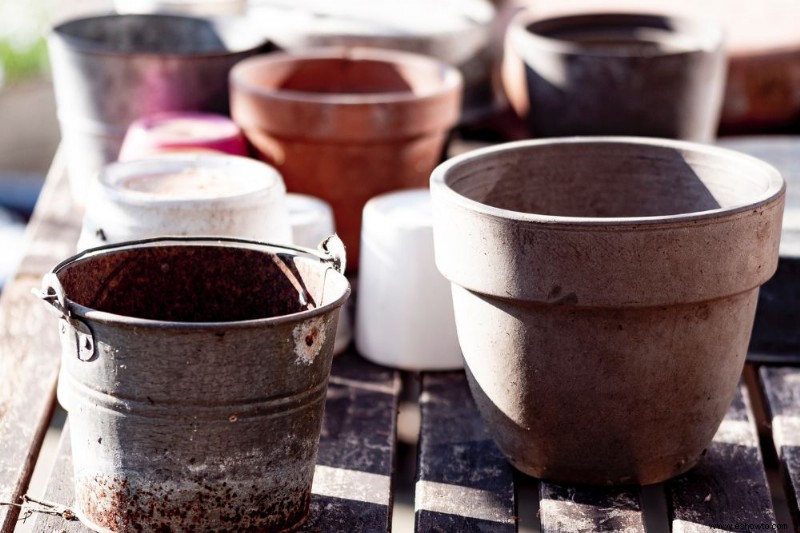
Grandes o pequeñas, anchas o estrechas, las plantas de albahaca crecerán felices en cualquier contenedor que ofrezcas. Esto le da la libertad de seleccionar una maceta para su albahaca que funcione mejor dentro de su espacio.
La clave para elegir una maceta para la albahaca es elegir una que drene bien. Si no hay agujeros de drenaje en su maceta, taladre los suyos. También puede dirigirse a su vivero local para ver qué opciones tienen.
Llena tu maceta con la mejor tierra
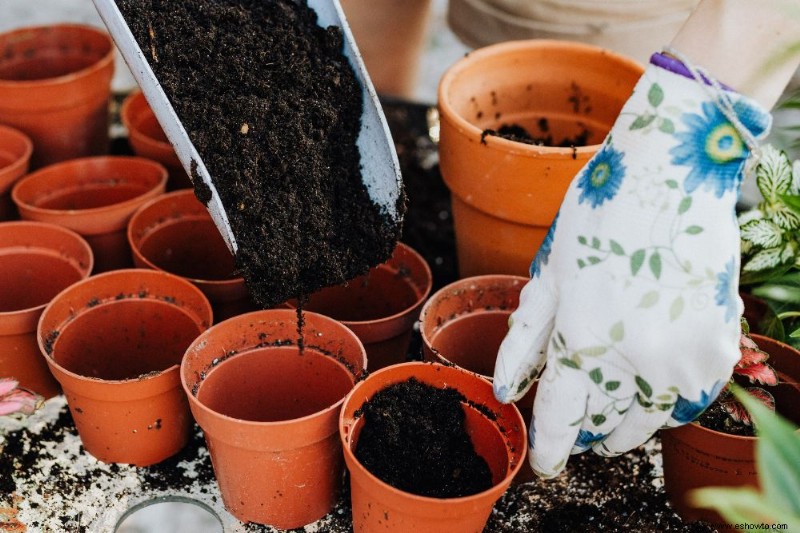
Debido a que su planta de albahaca está creciendo en el interior, seleccione un suelo para macetas saludable para que coincida. Las mezclas para macetas de interior ofrecen los nutrientes, como el magnesio, necesarios para cultivar albahaca en el interior. También puedes usar fertilizantes naturales como abono orgánico, té verde o incluso café molido para darle un buen gusto a la albahaca. Su suelo debe contener perlita o turba para un drenaje adicional y una aireación adecuada. Cuando se trata de darle a su albahaca la mejor oportunidad de crecimiento, es fundamental usar un suelo rico y con buen drenaje.
Hay muchas mezclas premezcladas para macetas de jardín de interior disponibles para su uso. Algunas marcas incluso ofrecen mezclas para macetas hechas específicamente para hierbas de interior. Muchos jardineros también fomentan el uso de una mezcla sin suelo, que a menudo incluye bases de turba, perlita e incluso corteza de madera. Cuando busque su suelo, siempre confirme que el suelo incluye perlita para fomentar el drenaje adecuado del agua.
Plant Your Basil
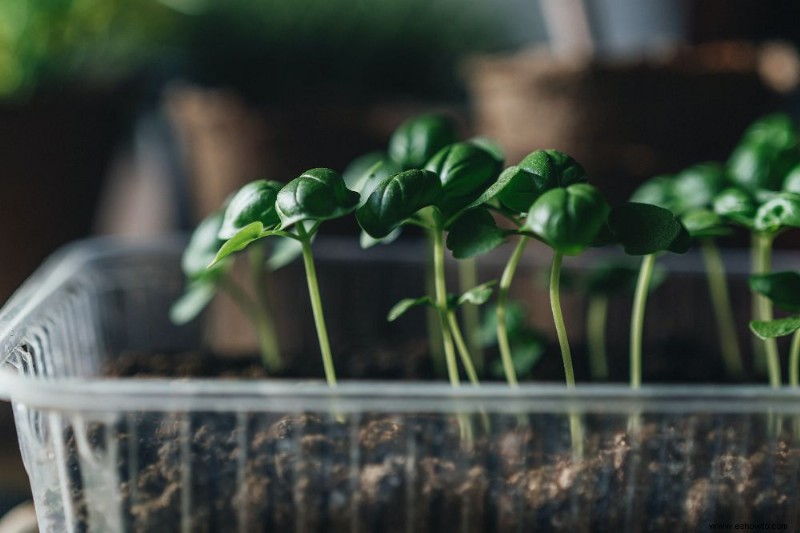
Basil plants are found at nurseries or sometimes at local grocery stores! Seek out your new basil plant, and find one that is full of leaves and looks healthy.
Avoid picking one with discoloration or spotting on its leaves. Basil plants with discoloration are likely signs of disease, of which for a basil plant, there is no cure; Fusarium wilt, downy mildew, and black spot all pray on this herb. These affected plants result in the basil dying quickly.
Depending upon how adventurous you feel, there is also the option to grow your basil plant from seed. Because you are growing your basil plant indoors, it is possible to plant them at any time of the year. However, growing a basil plant from seed requires plenty of sunlight and warmth. For those living in areas with less light in the winter months, using an indoor LED growing light is advantageous.
When planting multiple basil plants, use a seed starter container to first grow the seeds. Then when they have three or more leaves, transplant them into the pot of your choosing. Always allow ample space for your plants to mature. Basil grows and spreads quickly, so to prevent overcrowding space them about three to four inches.
Find the Perfect Spot for Your Basil
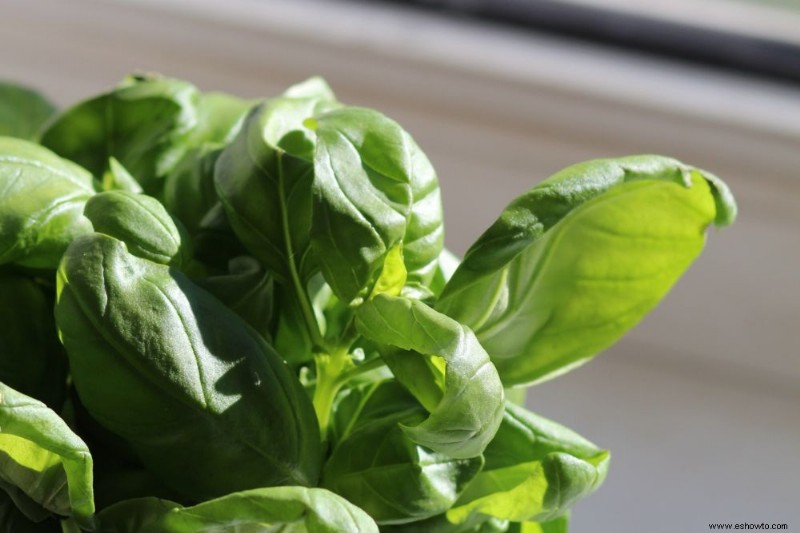
Once you plant your basil into its new home, situate it somewhere that receives plenty of sunlight. Find a spot in your home where this annual herb will get direct sunlight for at least six hours of the day.
Where you choose to rest your basil pot is up to you. Some choose to put it right on the windowsill, some put it on the table near a sunny window. If you are feeling creative, make a hanging herb garden to suspend your basil and other favorite herbs!
Water Your Basil
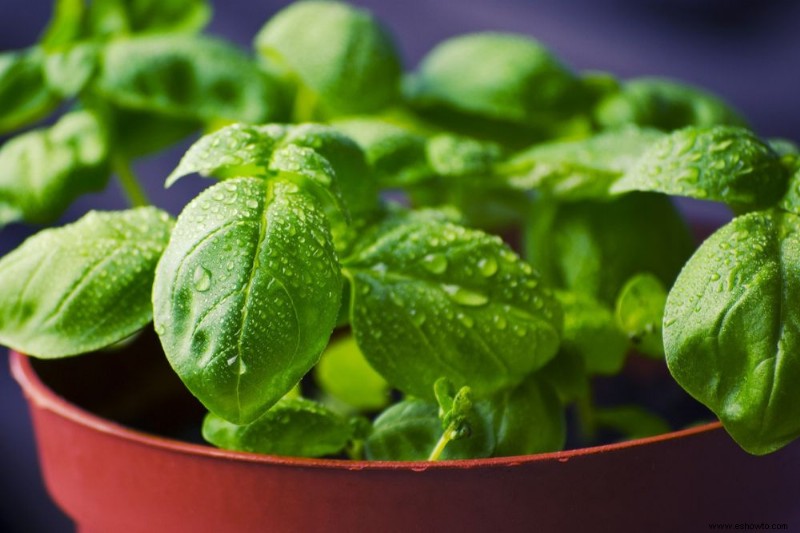
Basil likes moist soil, but overly wet soil is a common issue that leads to root rot, disease, or decay. Water your basil plant about twice a week avoiding the foliage as you go. Depending upon the amount of sunlight your basil plant receives and how large it is, watering times will vary.
To determine whether your plant needs another drink, stick your finger into the soil. If the soil is moist, the plant is fine, however if it is dry, it needs watering. Another way to tell if your plant is requiring water is to lift the pot. A plant with moist soil is heavy. Whereas if the plant is light and easy to lift, it’s drying out.
Pro Tip: Check your basil plant regularly to ensure it does not go too long without water. Try to avoid letting your plant wilt before giving it another soak.
Maintain Your Basil Plant
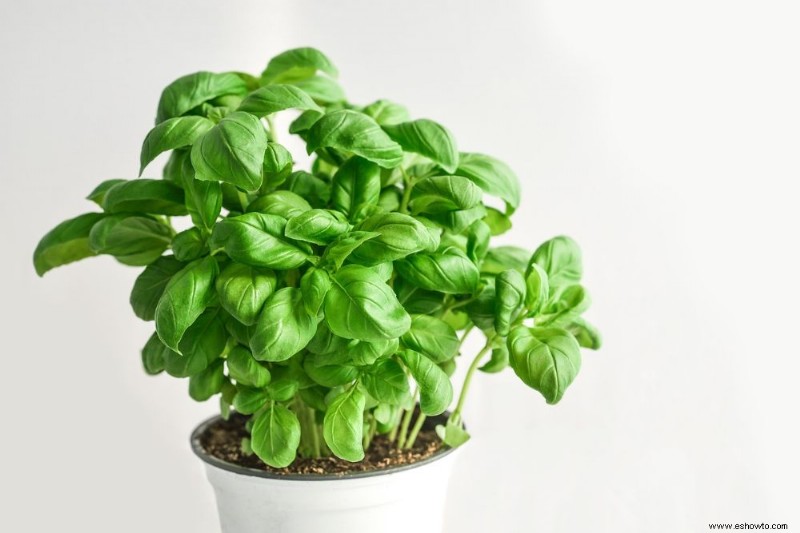
Once your situate your basil plant, work to maintain its growth. This includes pruning it when it becomes too tall and leggy.
Pruning encourages your plant to become bushier, providing you with more basil leaves for use in the kitchen.
Another way to maintain your plant is to keep an eye on it. Your plant will tell you when it is receiving too much or too little of something. If your plant develops yellow leaves, this means it is receiving too much water or not enough sunlight.
If your leaves begin spotting and become discolored, this is usually a result of disease.
Herb Your Enthusiasm
Follow these easy steps for a healthy basil plant that is prepped, potted, and full of potential!
As long as your basil plant has a well-draining pot and soil, and a sunny spot to live, it’ll flourish! Create a watering schedule and then start thinking about what new recipes to use your freshly harvested basil in.
Is your new basil plant growing in abundance? Struggling to keep up with all the fresh basil? Take a look at how to properly store basil both at room temperature and in the freezer. Knowing how to do it accurately ensures fresh basil is at your fingertips any time of the year!
Don’t forget to share this article with your gardening friends!

